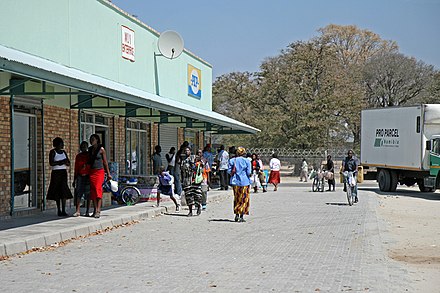Katima Mulilo - town in Zambezi Region, Namibia
Katima Mulilo is a small town with 28,000 people (2010) on the banks of the Zambezi River in the Zambezi (Caprivi) region of Namibia. Compared to many other parts of Namibia you will find people in small communities living in huts.
Understand
 The town sits amidst lush riverine vegetation with tropical birds and monkeys. Katima Mulilo is inhabited by members of the Masubia and Mafwe tribes.
The town sits amidst lush riverine vegetation with tropical birds and monkeys. Katima Mulilo is inhabited by members of the Masubia and Mafwe tribes.
Since the opening of the Katima Mulilo Bridge in 2004 that spans the Zambezi River and connects the Zambian Copperbelt with the Namibian deep sea harbour at Walvis Bay, Katima Mulilo has become a boom town that attracts significant investment. This development has, however, also fanned illegal business activities, and driven the establishment of shanty towns to an extent that endangers social stability.
Since being proclaimed a town in 1999, development has been steady but as of 2010, Katima Mulilo does not compare to more established towns and cities in Namibia. Few streets are tarred, and there is a lack of street lights and sewerage. Many residents use the bushes for lack of toilet facilities, and there have been many outbreaks of diseases such as diarrhea.
Get in
 Katima Mulilo is on the national road B8. The nearest Namibian town to Katima Mulilo is Rundu, about 500 km away. About 40 km east of Katima Mulilo lies the village of Bukalo, where the road to Ngoma branches off that joins Namibia to Botswana.
Katima Mulilo is on the national road B8. The nearest Namibian town to Katima Mulilo is Rundu, about 500 km away. About 40 km east of Katima Mulilo lies the village of Bukalo, where the road to Ngoma branches off that joins Namibia to Botswana.
Katima Mulilo is not connected to the Namibian railway network.
There are flights from Windhoek a few times a week. There are usually no cabs at the airport (as of 2022) so make sure to have your transportation solved or be prepared to walk.
Get around
See
Do
Buy
The town has the largest open market in Namibia.
Eat
- Green Basket Cafe, Plot 539, Transcaprivi, B8, Katima Mulilo, Namibia, -17.499463833779643°, 24.269004645210003°. 2022-07-18
Drink
Sleep
- Protea Hotel Zambezi River Lodge, Ngoma Road, -17.486323°, 24.286362°, +264 66 251 500. 2019-09-28